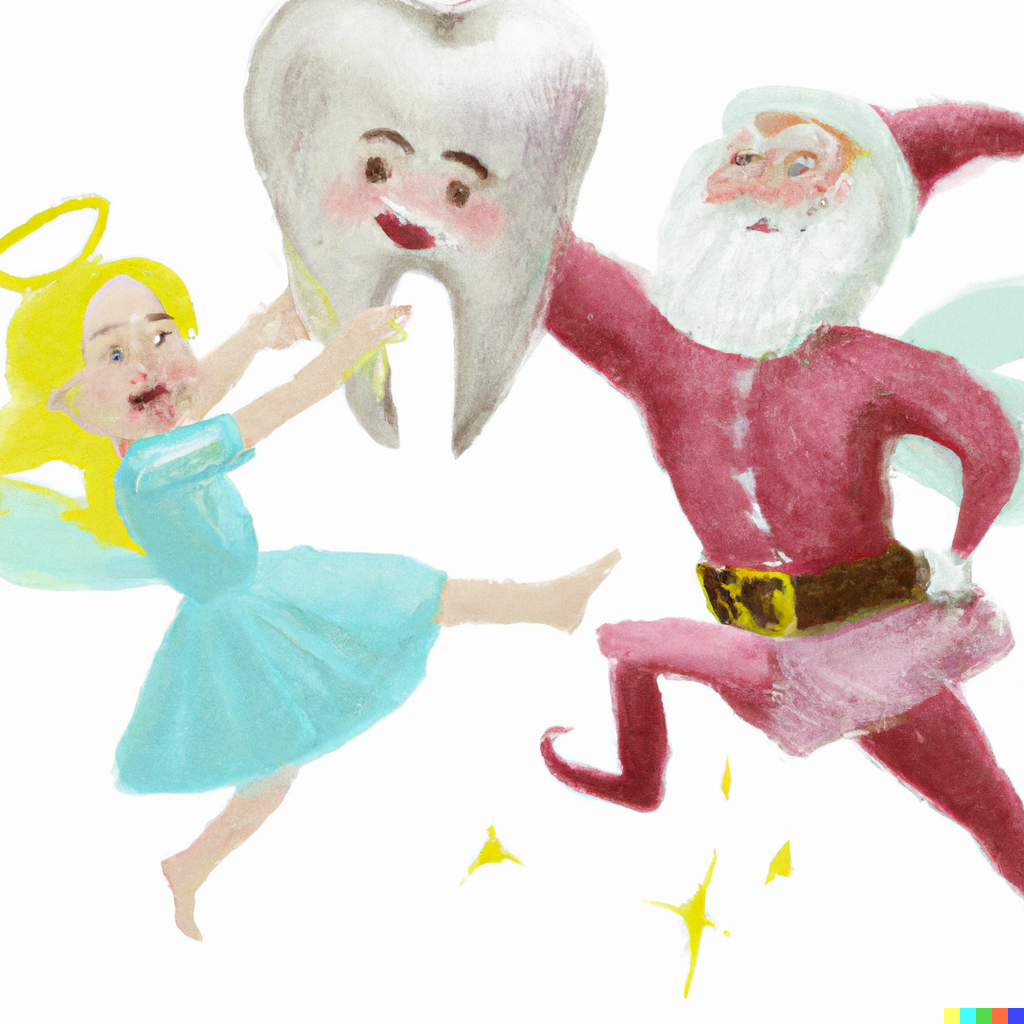
Will Hodges and Art Carden
Santa Claus, the Easter Bunny, and the Tooth Fairy are all notable gift-givers. So who is the best gift-giver? If we define “best” as “most economically efficient” (in a narrow sense), the Tooth Fairy is a runaway winner. Santa Claus and the Easter Bunny offer variety, but they presume to choose for you. Santa brings the toys you put on your list and the socks you didn’t. The Easter Bunny fills your basket with candy…and poorly painted hard-boiled eggs.

The Tooth Fairy, to her credit, doesn’t ask you to make a list. She doesn’t presume to pick candy for you. She just brings you cold, hard cash. So, while Santa and the Easter Bunny think they know best, the Tooth Fairy embraces the Economic Essentials.
Specifically, she understands that trade-offs are everywhere. The time people spend in stores and on Amazon could have been used doing something else. The adults (and some of the kids) have jobs. While time is not exactly “money,” we can use data on hourly earnings to estimate just how valuable it is. Average Hourly Earnings of All Private Employees in December 2022 were $32.82 per hour. The time people spent in department stores and shopping online could have been spent working. Then they could have given cash and probably had something left over. That’s one reason many economists think cash is a great holiday gift–and it looks like it’s how the Tooth Fairy operates.
Giving a gift is like getting a college degree. College degrees send valuable signals about prospective employees’ skills, work habits, diligence, etc. A gift should send similar signals, but it runs into a knowledge problem. Givers try to align gifts with recipients’ preferences but make mistakes. Hence, people waste valuable time returning gifts they don’t want. Not all signals are informative, which can certainly be true about the signals you’re unwrapping during the holidays.
The Tooth Fairy avoids complications and awkwardness by just giving cash. Then, the recipient can use it on whatever they want. If prices are sticky and there are a lot of unemployed factors of production, there might even be a multiplier effect.
Because time is valuable and interests are only sometimes understood, cash is the best gift. The recipient can use the cash on anything. The Economic Essentials explain that trade is cooperation, not exploitation. Cash means recipients can cooperate with whomever they please instead of hoping that Santa, the Easter Bunny, or Aunt Sally choose wisely. When someone gets cash, they can create win-win scenarios with people selling what they want. Consumers get the goods and services they want, and merchants get the money they want.
All in all, cash is the most economically efficient gift. It offers the most opportunities for gains from trade. By giving cash, the Tooth Fairy shows that she is the most efficient gift-giver. Maybe Santa Claus and the Easter Bunny should take notes.
Will Hodges is a student, and Art Carden is an economics professor at Samford University. They reluctantly acknowledge that Anthony Gill and Michael D. Thomas might be right about the dynamic efficiency of gift-giving.

READER COMMENTS
Monte
Apr 16 2023 at 12:44pm
A very lucid, creative, and entertaining post. But there are a couple of points I must take issue with.
Only in the sense that cash, as a medium of exchange, is more efficient. As a gift giver, however, the Tooth Fairy is what we might call a reluctant monopolist.
It was rather presumptuous of you to assume that the tooth fairy was a she. She, in fact, is a he. Or, if you prefer, a he/him/his (although as a monopoly, it may be more appropriate to refer to the Tooth Fairy as a they/them/theirs).
Readers might be interested in knowing that economist Justin Wolfers has determined the average amount the Tooth Fairy pays for deciduous teeth has jumped by 16%, to $6.23.
Finally:
Comments are closed.